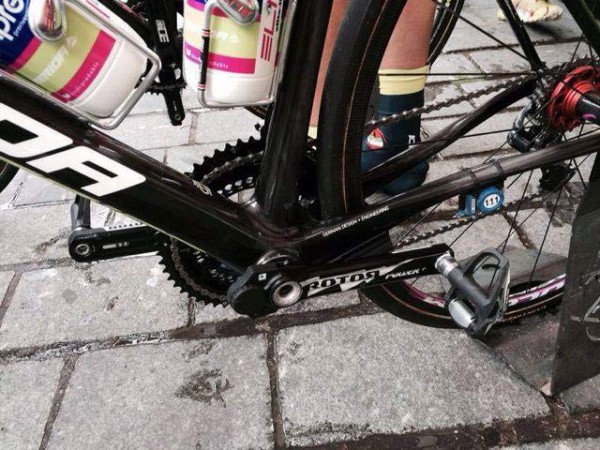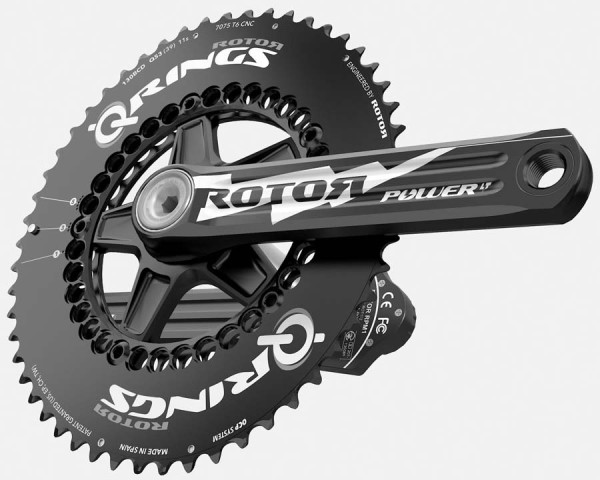
Introduced in the heat of the Tour de France aboard Rui Costa’s Merida Reacto KOM, the new Rotor Power LT takes their crankset based power meter introduced at Eurobike 2012 and covered in great detail in this post.
That system used a separate power meter gauge on each crank arm, each with its own transmitter and four distinct strain gauges inside each arm, using their 3D drilled design to tuck them inside the alloy arms. For the new Power LT, they simply dropped the drive side meter, relying on a single group of strain gauges and transmitter to process the data. Like other one-sided systems, it likely just doubles the measurement to send a single power figure to ANT+ compatible cycling computers rather than separate left- and right leg measurements.
Like the original, it still measures deformation of the crank arm in three axes, which lets it determine torque effectiveness (how much your leg drags on the system on the upstroke) and pedal smoothness (max torque vs. average torque). And it still only requires a single zero calibration when changing batteries, self adjusting for temperature, altitude, etc.
Battery replacement is quick and easy with no tools. The crankset uses a 30mm spindle that works with their Universal Bottom Bracket to fit it into any frame, even standard threaded bikes originally built for 24mm spindle cranksets.
They’re available with either oval or round rings, 10- and 11-speed compatible. The crankset has a claimed weight of just 535g to 545g for 170mm arms – 172.5 and 175 are also available. 110 and 130 BCD available.
The idea was to offer a lighter weight, less costly option for measuring power. They’re about 50g heavier than a bare 3D+ crankset. A direct comparison to the dual sided Rotor Power crankset isn’t applicable since it uses their MAS (micro adjust) spider rather than the regular five-pronged spider.
Retail is much less, though, coming in at $1,490 (€990) for Power LT versus $2,350 for the regular Power. That’s about double the lowest cost one-side PM from Stages, but you’re getting a full crankset rather than just an arm, and it’s in between the various options of Quarq’s sets since they dropped the prices (and chainrings).

